The building of the Church of Sacred Heart and St. Catherine of Alexandria was the culmination, for Droitwich, of a long and difficult period in the history of the Roman Catholic faith in this area of Worcestershire.
Within ten miles of Droitwich are a number of old houses, including Harvington Hall, Rushock Court, Huddington Court and Grafton Manor, which were notable centres of Catholic life well before the Reformation. Their owners helped to sustain the faith during the turbulent times when its elimination was the aim of the Crown and State.
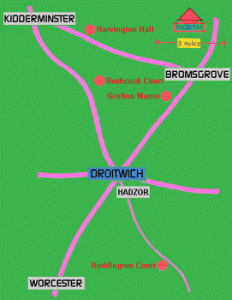
In 1641 a Parliamentary order was sent from London to the Sheriff of nearby Worcester to suppress any meetings of Catholics. In 1642 the Mayor of Worcester was “entreated to make an order that no Papists or recusants (ones who refused to attend the new Church of England) be suffered to take houses nor be residents within the city”.
The Catholic stronghold of Grafton Manor in Bromsgrove continued to serve as a centre for the faithful. And until the opening of St. Peter’s Church, Bromsgrove in 1858, the chapel at Grafton was used, as it had been for centuries, for Catholic worship.
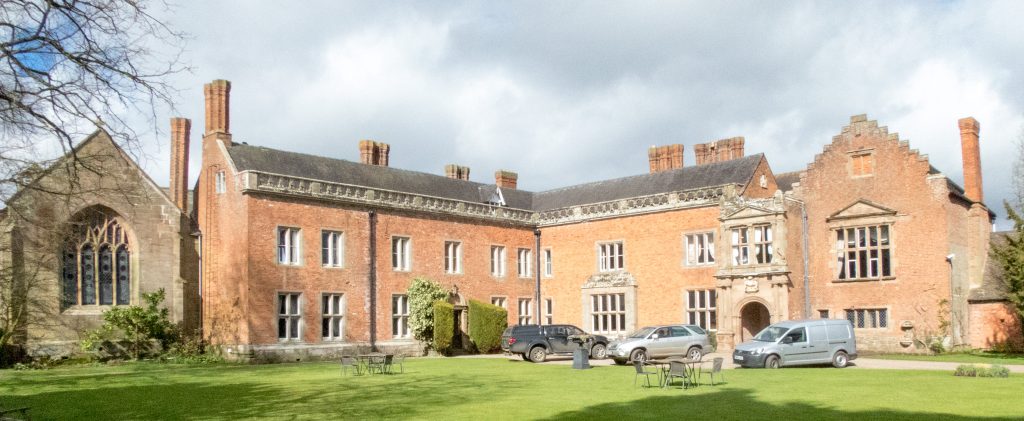 Grafton Manor, Bromsgrove
Grafton Manor, Bromsgrove
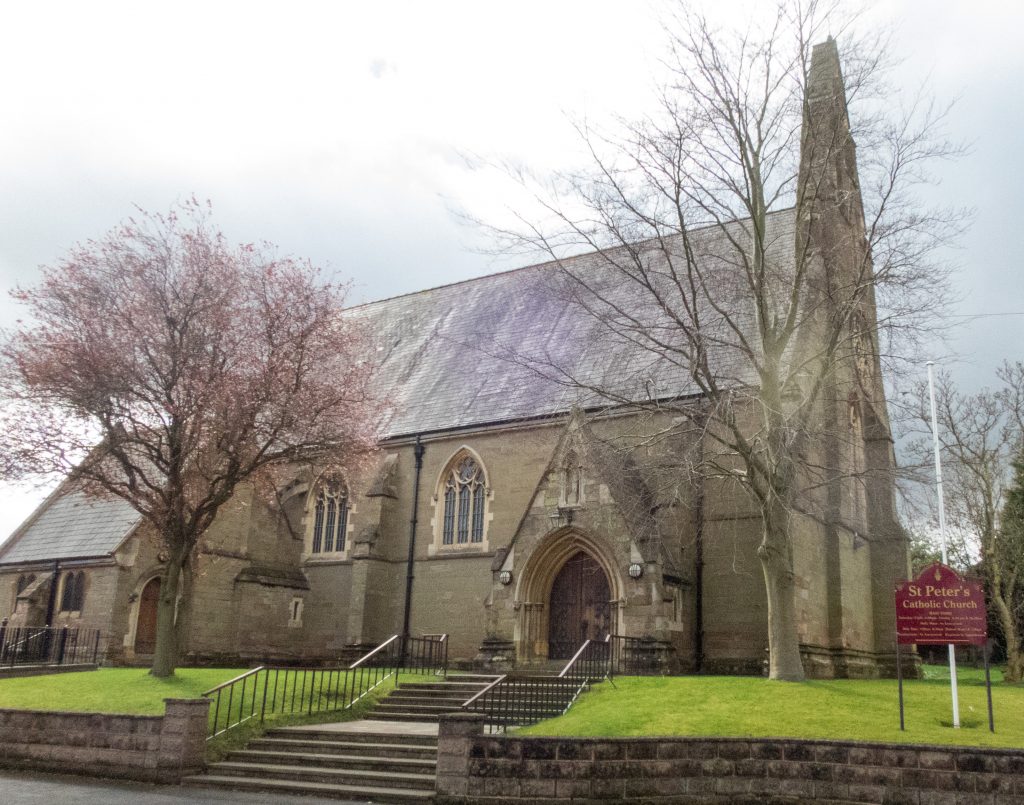 St. Peter's, Bromsgrove
St. Peter's, Bromsgrove
One of the Mass attenders at Bromsgrove was a Major Theodore Howard Galton of Hadzor, and on 13 June 1877 Mass was said for the first time in his house, which is located just on the edge of Droitwich. Donations by Major Galton led to the building of Hadzor School and also the Church of St.Richard and St.Hubert in Hadzor.
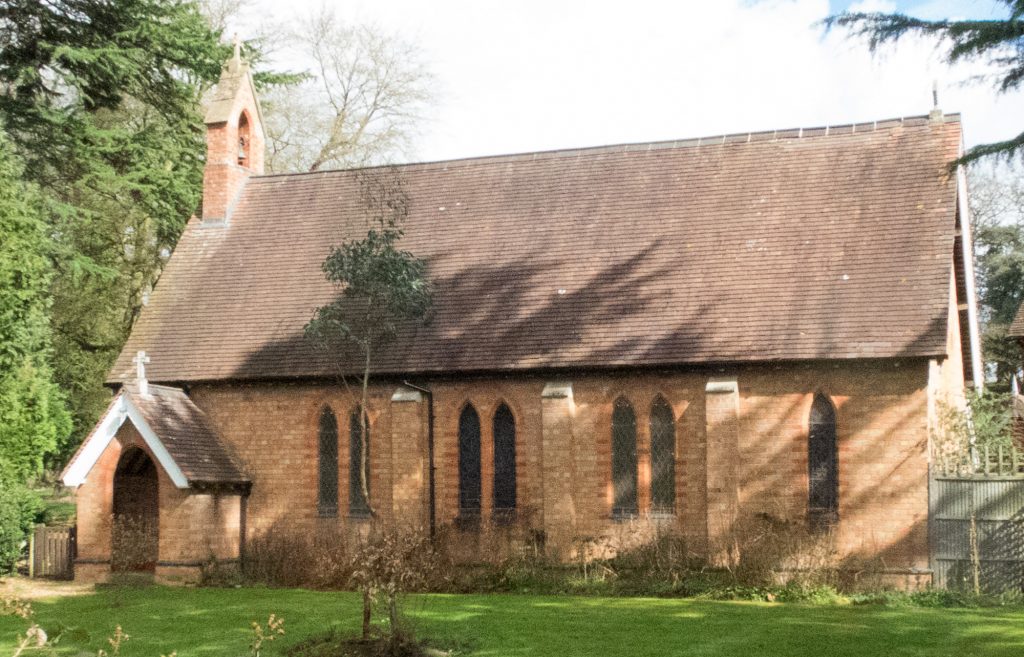 St. Richard and St. Hubert, Hadzor
St. Richard and St. Hubert, Hadzor
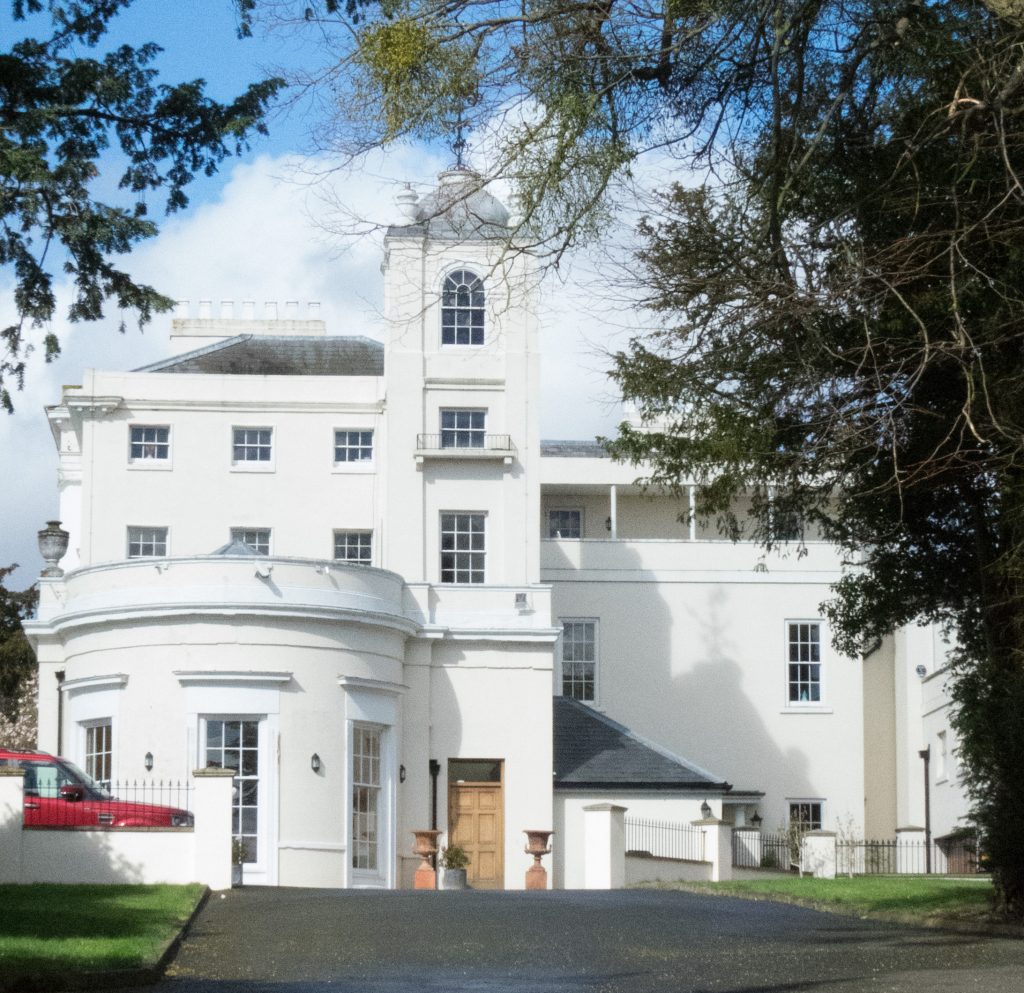 Galton Hall, Hadzor
Galton Hall, Hadzor
Before a Mass centre became available at Hadzor there was only one Catholic in Droitwich, a Mrs Hill, and she was known as ‘the Catholic of Droitwich’. Mrs Hill used to walk the seven miles to Bromsgrove on Sundays to attend Mass, unless she was given a lift by Major Galton in his carriage.
In 1903 the Fathers of the Congregation of the Sacred Heart at Betharram (near Lourdes), having been expelled from France by the drastic laws passed by the French Government against all religious communities, had migrated to many parts of the world including England. In due course one of the Congregation, Father Joseph Dospital, was appointed to a mission at Droitwich and on 19 March 1909, the feast day of St. Joseph, the first Mass was said in a property known as Witton Villa on Worcester Road. This house was also occupied as a presbytery and at the same time two other houses, Binswood and Linville, were rented on the other side of Worcester Road to act as a residency for the Sacred Heart Congregation and then as a presbytery and school.
Later, Father Dospital moved to Binswood, and Witton Villa became a convent school for girls, administered by the Sisters of Charity (de Bourges). The Convent closed in 1932 when the nuns were recalled to France.
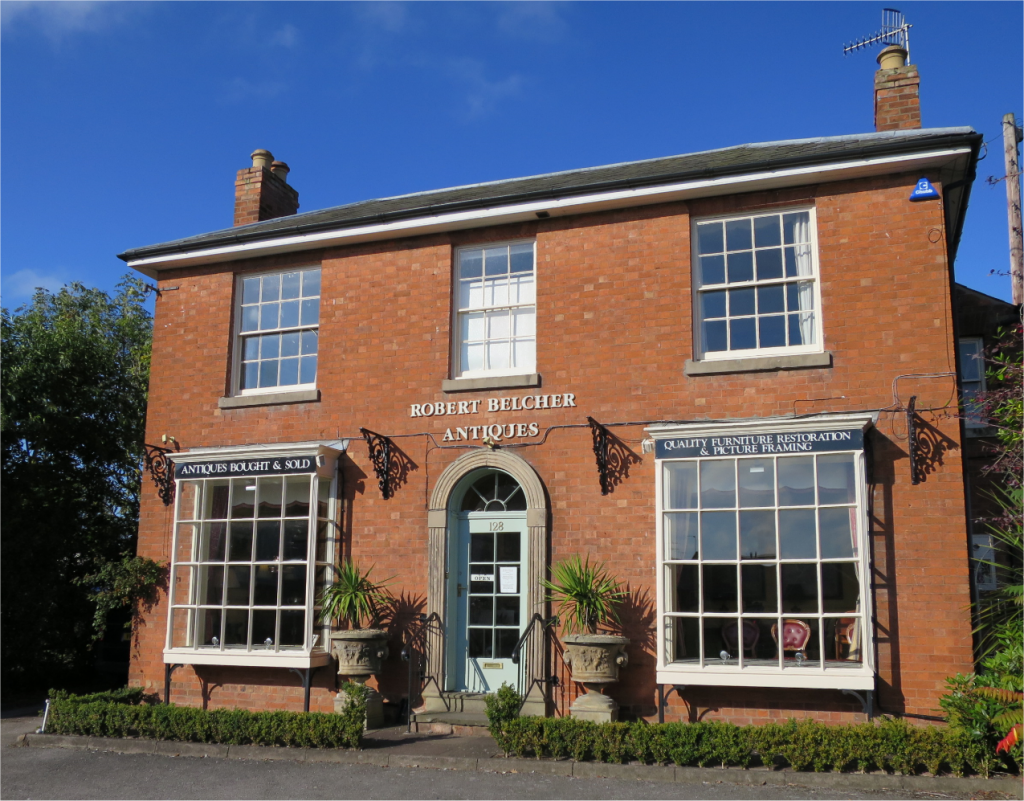
Antiques shop in 2015 - Formerly 'Witton Villa'
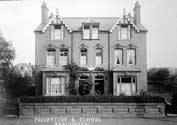 The Original Presbytery and School known at that time as 'Binswood' and 'Linville'
The Original Presbytery and School known at that time as 'Binswood' and 'Linville'
In 1909 ‘a three acre meadow’ was bought on Worcester Road and a small church was built on the site.
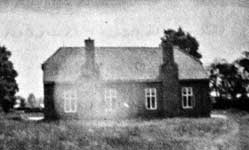
The original Church, in 1910
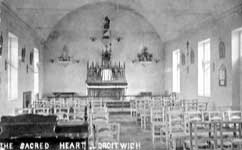
The original Church interior, in 1910
It had long been the desire of Mr Walter Loveridge Hodgkinson, who lived at nearby Rashwood Court, to build a church in Droitwich as a thanksgiving offering to Almighty God. In fulfilment of this desire he donated the present church and it was built in front of the original little church. The foundation stone was laid on 25 November 1919 and the church was dedicated to the Sacred Heart (after the Sacred Heart Fathers) and to St. Catherine of Alexandria (as a memorial to Catherine the late wife of Mr Hodgkinson). The first Mass was celebrated on 24 November 1921, the anniversary of the death of Catherine Hodgkinson who died on 24 November 1906
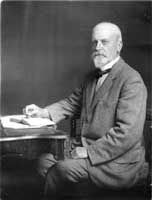
Walter Loveridge Hodgkinson in 1913
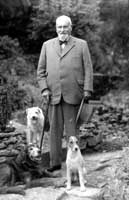
Walter Loveridge Hodgkinson in 1933
Other members of the Hodgkinson family and many other benefactors contributed to the cost of the altars, pulpit, font, organ, mosaics, sculptures, vestments and sacred vessels
In the 1930’s the original little church was incorporated into a new building to serve as a boys’ college. The Sacred Heart College had a mix of boarding and day boys and the building expanded in size over the years up to a maximum school roll of 270 pupils.
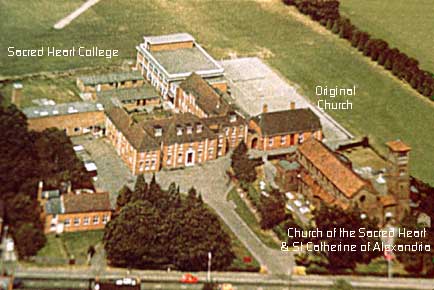 The Church and College in the 1960s
The Church and College in the 1960s
The College continued to be run by the Sacred Heart Fathers and Brothers until it closed in 1991. A portion of the site, occupied by the College buildings and the adjoining sports field, was sold for development and is now a housing estate.
Following the closure of the College, the Sacred Heart Fathers dispersed to extend their missionary work in Thailand and India as well as serving our own parish and parishes in Great Barr and Olton, Birmingham, in Whitnash near Leamington Spa, Leigh in Lancashire and Guernsey.
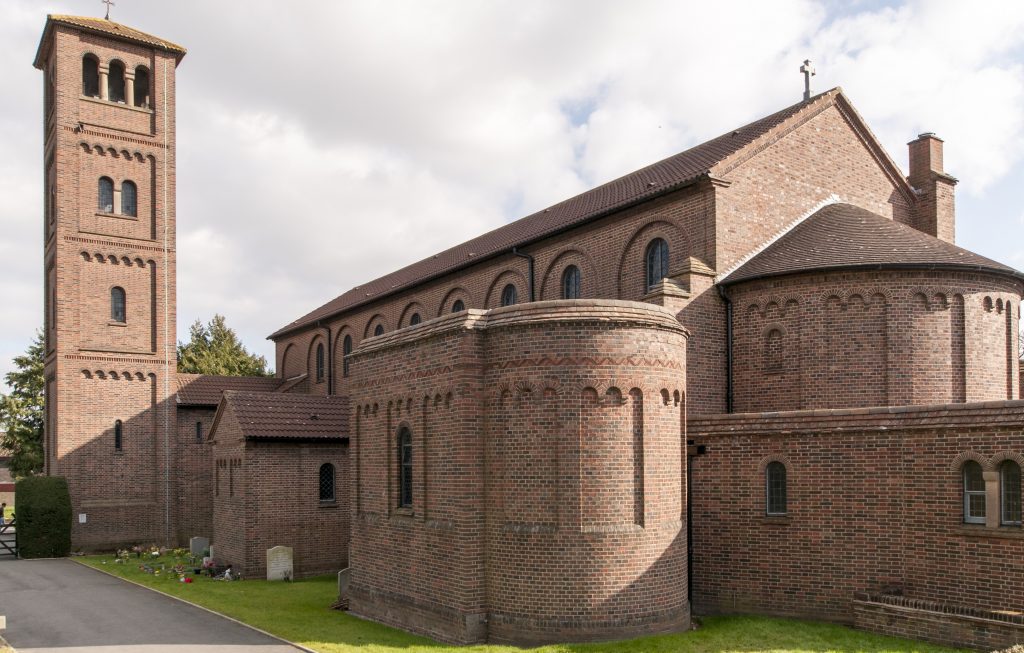 The Church in 2016
The Church in 2016
